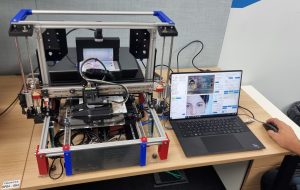
The project SWEETIDS, an acronym for ‘Sweet spot ID documentation system’, introduces a working prototype of a novel cost-effective, reliable, and easy-to-operate device for travel document checks that uses multiple light sources to automatically acquire a series of images of the most vulnerable security features (‘sweet spots’) on travel documents. High-resolution optical imaging is applied on specific spots in the documents to detect most frequent manipulations such as: photo replacements, overprints on the holder’s face picture, changes in the check digits of the machine-readable zone (MRZ), wrong printing techniques, false optically variable inks (OVIs), damaged diffractive optically variable image devices (DOVIDs) over photos, changes of the age digits, missing anti-Stokes fluorescent particles. Exact coordinates of the imaged points and acquisition/verification metadata (e.g., the used light sources) are also be stored in the system for further analysis and to feed the databases.
State of the art travel document check systems typically include either mobile, manually-operated devices which are inexpensive, or expensive and heavy high-quality stationary devices. The solution combines the advantages of both systems by adding mechatronics, resulting in a cost-effective and reliable system, easy to use by border guards. Innovations, like a novel document fastening mechanism and a moving optical head with a camera are introduced to collect swiftly images of the most relevant details on travel documents with different levels of quality as necessary for evaluation by experts.
This project has received funding from Frontex under the Frontex Research Grants Programme: Call for Proposals 2022/CFP/RIU/01, Grant Agreement No. 2023/345.
Further information can be found on the Frontex website: https://www.frontex.europa.eu/innovation/eu-research/research-grants/
